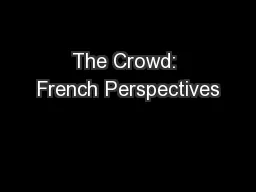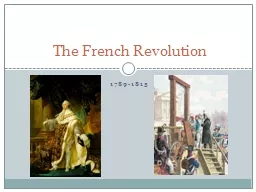PPT-1789-1799 French Revolution
Author : giovanna-bartolotta | Published Date : 2018-11-08
5 Stages of the French Revolution Stage One Spring and Summer of 1789 Meeting of the EstatesGeneral Storming of the Bastille The Great Fear Stage Two 17891791 National
Presentation Embed Code
Download Presentation
Download Presentation The PPT/PDF document "1789-1799 French Revolution" is the property of its rightful owner. Permission is granted to download and print the materials on this website for personal, non-commercial use only, and to display it on your personal computer provided you do not modify the materials and that you retain all copyright notices contained in the materials. By downloading content from our website, you accept the terms of this agreement.
1789-1799 French Revolution: Transcript
Download Rules Of Document
"1789-1799 French Revolution"The content belongs to its owner. You may download and print it for personal use, without modification, and keep all copyright notices. By downloading, you agree to these terms.
Related Documents














